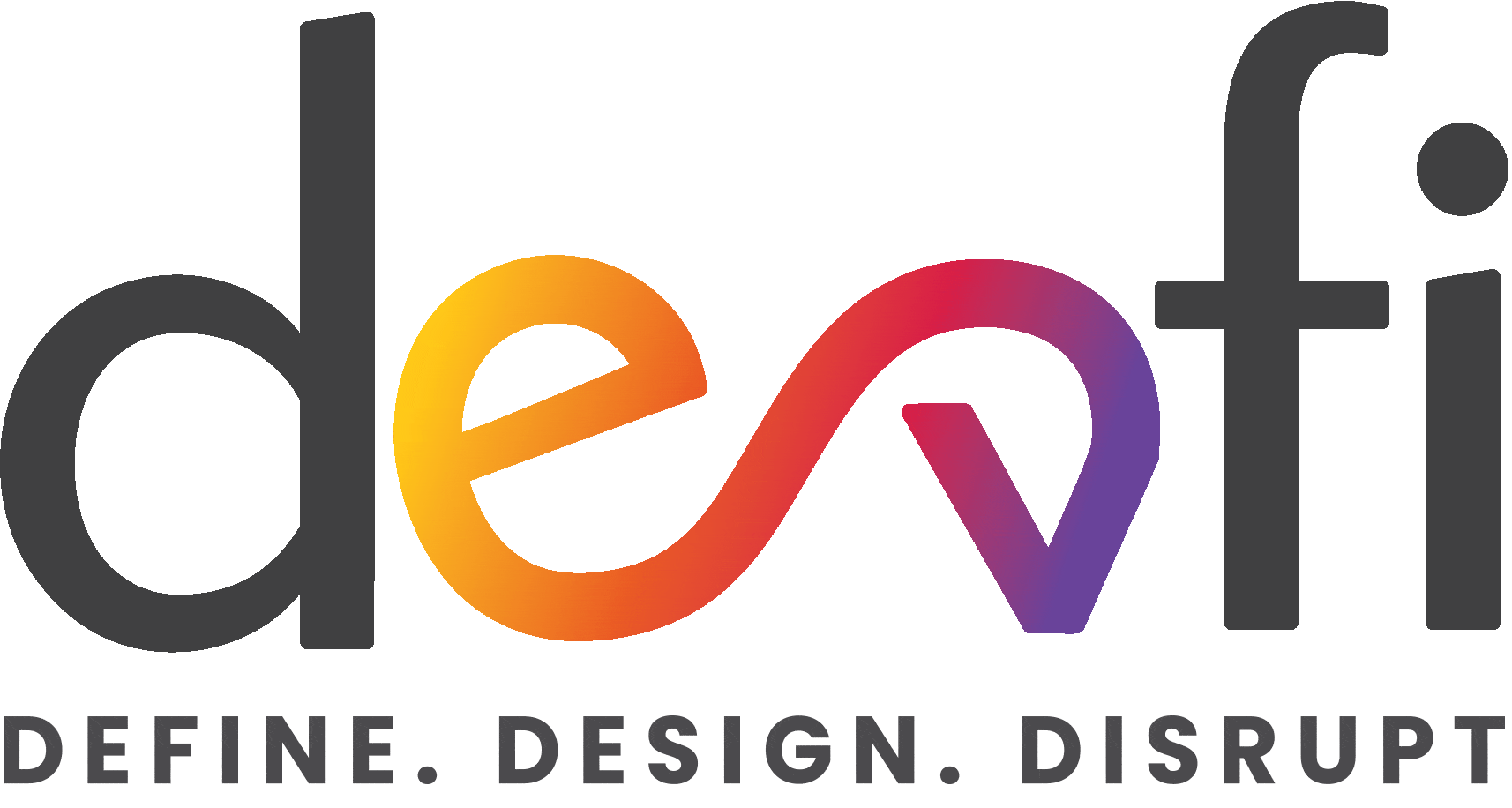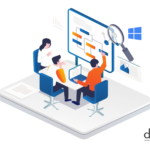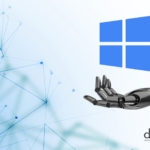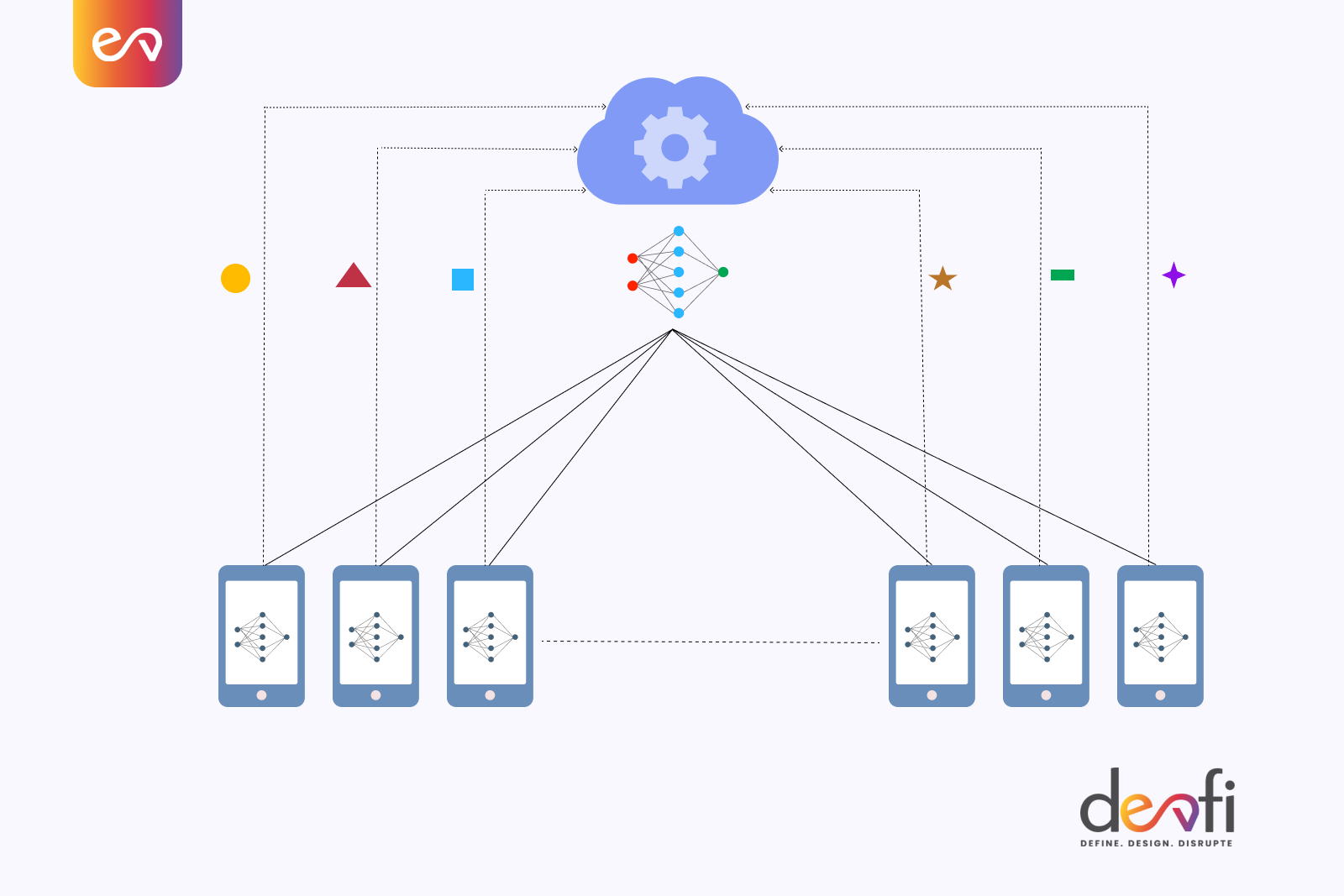Federated learning is one of the most exciting developments in AI and data science. It has the potential to revolutionize how we handle data and make decisions—and it’s already getting results.
What is federated learning?
Federated learning allows for the creation of a single model that’s been trained using multiple datasets, without any of those datasets being shared. This means that an algorithm can be trained on data that belongs to different people or organizations, without them ever having to share it with each other. This stands in contrast to traditional machine learning approaches where all the datasets are centralized and uploaded to one server.
How federated learning works?
Federated Learning works by splitting up the model into multiple parts (sub-models), training each part independently, and then combining them together when they’re finished training. Each part has its own training schedule and its own source of data so that they can all be trained independently, but still work together later on in order to make predictions.
With federated learning, instead of having one model per task, you have one model that learns from all of the tasks at once. This means that the parameters of this “federated” model are learned from all of the individual models within it. The hyperparameters are still learned separately for each task but not for each individual model within the federation.
This is especially useful when it comes to training models without having access to large amounts of data or having access to large amounts of labeled data. In these situations, Federated Learning can help you understand what your users want from your product based on their behavior.
Federated learning benefits
- Scalability: The more data you have, the better your models will be. But if all of your data is stored in one place, then training your model will take longer than if it were stored across many different locations. Federated learning allows you to store your data in multiple locations and train models on each piece of data at the same time. This means that you can train faster with less computational power or storage space needed from each location than if you were doing everything on one computer alone!
- Adapt to new situations: One of the main advantages of Federated Learning is its ability to adapt to new situations that were not known at the time the model was created. In many cases, models can be applied to new situations without having to retrain them from scratch. This is because the model can learn from previous experiences and make predictions based on what it has learned before.
- Cross-model usage: Another advantage of Federated Learning is that it allows for improvements in one application to benefit other applications as well. For example, if a model learns how to better predict an outcome in one area, this knowledge can be applied to another area where it might also improve performance or reduce costs associated with training models manually or using traditional machine learning techniques like supervised learning methods such as deep learning techniques or artificial neural networks (ANNs).
- Creates a feedback loop between the company and its customers: This feedback loop allows companies to better understand how their products or services are being used by their customers, which in turn allows them to make changes that improve those products or services. For example, if a customer finds that a particular feature of a product isn’t working as well as they would like it too then they can tell their company about this issue through federated learning and then the company will be able to make changes so that future customers won’t have this problem with their product/service anymore.
- Help companies get ahead of trends before they become popular among consumers: For example, if a company has been using federated learning for some time now then it might notice that there’s been an increase in demand for cryptocurrency-related products/services over time; therefore we would recommend that company start offering cryptocurrency-related products/services now so that it doesn’t miss out on.
Federated learning applications in business
The applications of Federated Learning are spread over a number of industries including defense, telecommunications, IoT, and pharmaceutics. In these industries, Federated Learning can be used to solve a wide range of problems.
- Defense: One of the main applications of Federated Learning is in the defense industry. The defense industry is one of the largest industries in the world and it has been around for centuries. One problem that has plagued the defense industry for years is how to make sure that the weapons they produce are safe for the public. With Federated Learning, they can use machine learning algorithms to create safer weapons that will not harm civilians or soldiers when used correctly.
- Telecommunications: Another application for Federated Learning is in telecommunications. Telecommunications companies have been using machine learning algorithms for years now to improve their services by providing better customer service and better network connectivity. They also use these algorithms to identify customer preferences so they can provide them with better products and services.
- Pharmaceuticals: Pharma companies can use Federated Learning to improve the efficiency of their research and development processes by allowing them to make better decisions about what drugs they should invest in developing, how much funding should be allocated for each project, and which projects should be prioritized. This will help pharmaceutical companies save time and money, which will allow them to develop more drugs faster than ever before!
Federated learning use cases
Federated learning has the potential to help businesses in a variety of ways. Let’s take a look at a few use cases for federated learning, as well as how these use cases might be applied to your own business.
- Machine learning for customer service
Customer service is one of the most important aspects of any business’s success, and it can be difficult to manage effectively with traditional methods. With federated learning, it’s possible to train machines on how to respond appropriately in different situations, which allows employees to focus on other areas of their jobs and provides a more consistent experience for customers. - Predictive analytics for business intelligence
Predictive analytics is another area where federated learning could provide significant benefits by helping businesses make better decisions about which products or services they should offer based on market trends and customer behavior patterns over time. This could also reduce costs associated with loss prevention as well as improve employee morale by giving them more autonomy over their workday schedules without sacrificing quality or quantity of output overall.” - Drive efficiency of ad campaigns
Businesses can use federated learning to improve the efficiency of their advertising campaigns by using the data collected from these campaigns to better understand how consumers respond to certain types of ads, and what factors influence these responses. - Drive employee efficiency and productivity
Federated learning could also be used by businesses looking to improve employee performance by gathering data about employees’ work habits and productivity levels. The benefits of federated learning in this context are twofold: it helps workers learn how to do their jobs more efficiently so they can complete projects faster and more efficiently, which will save money for companies in terms of overhead costs; it also helps employees feel more engaged with their work because they are receiving personalized feedback from experts every step of the way.
The benefits of Federated Learning also extend beyond these areas. For example, it has been shown that this technology can be used to improve education systems by providing teachers with data about student progress that allows them to make more appropriate decisions about what types of teaching strategies or methods will work best for each specific student. This type of information is invaluable for improving educational outcomes for students all around the world!
Implementing federated learning in your business
It can be quite challenging to get started with Federated Learning, especially if you’re new to the space. That’s why we’ve put together a few tips for getting started with Federated Learning in your business.
- The first thing you should do is decide if Federated Learning is right for your company. If so, then you’ll want to start by setting up your environment: selecting a platform and testing it out before deploying it at scale. This step will help ensure that your deployment goes smoothly and will allow you to make any necessary changes before rolling out the technology on a larger scale.
- Once you’ve done that, you’ll want to consider how much data you have available. Does your company already have the infrastructure in place to host large amounts of data? If not, then this may mean having some work done before deploying Federated Learning—but don’t worry! We’ve got some tips for that too!
- The next step is choosing which algorithm you want to use for training your model. For this step, there are two main options: Bayesian Optimization or Evolutionary Algorithms. Both of these methods can be used with Federated Learning, but they require different approaches in order to achieve optimal results.
- Find an experienced partner to implement federated learning in your business. The Federated Learning approach is not appropriate for every organization. It requires a significant investment of time and resources, and it can be difficult to implement correctly. As with any new technology, there are also risks involved in adopting it.If you’re considering federated learning as part of your digital transformation strategy, we recommend that you find an experienced partner to help you implement the solution correctly.
Our team has extensive experience implementing federated learning solutions for clients around the world. We use this expertise to help organizations like yours understand the benefits of federated learning, how to get started with it and leverage it optimally. If you have a federated learning project in mind, please make use of our free consultation and get unbiased advice from our experts here.






